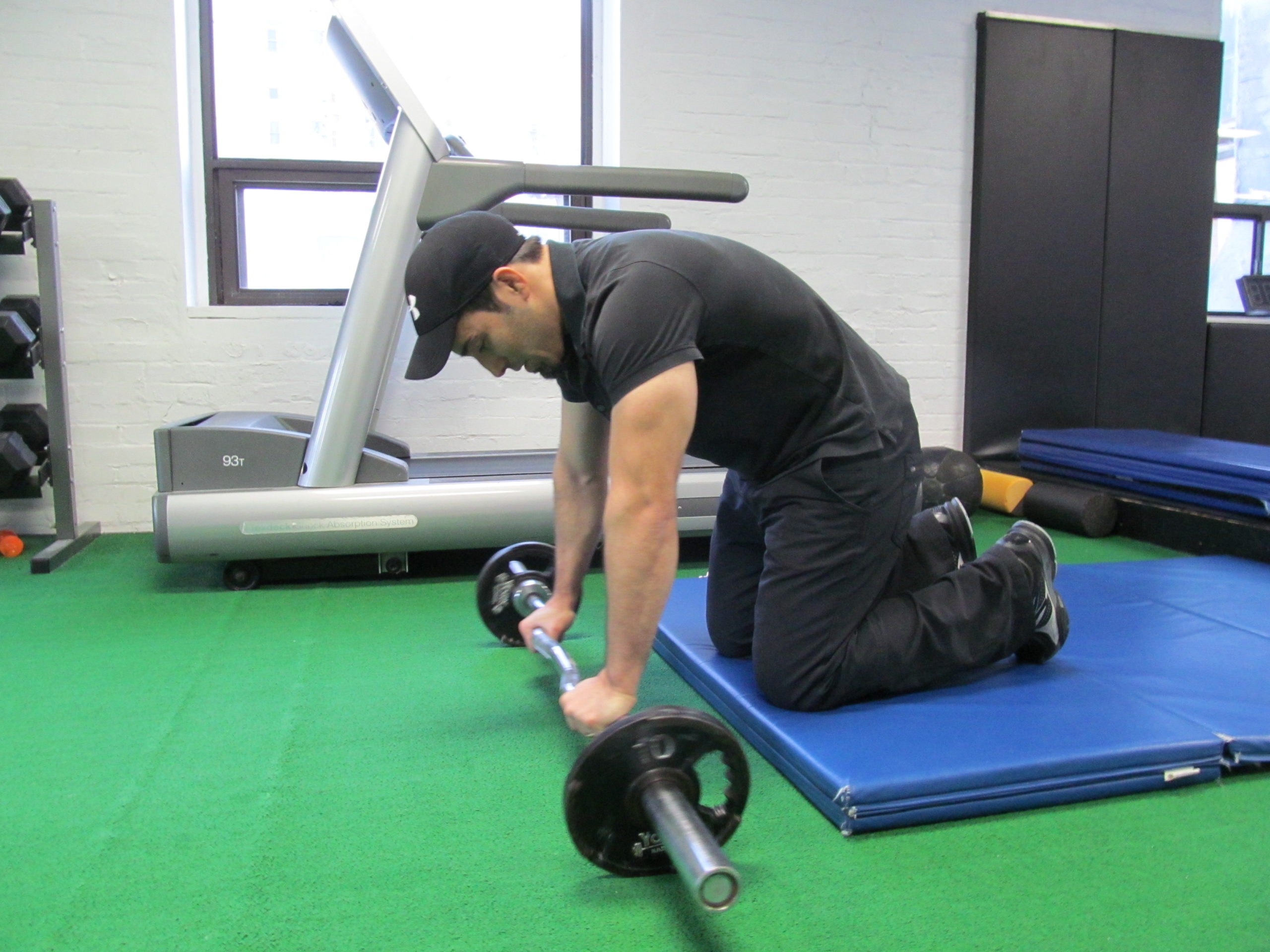Countdown To The Best Back Exercise
Upper-back development is the key to victory whether in bodybuilding, athletics or first impressions. No other group of muscles pack the same degree of aesthetic and functional significance. We use our lats and scapular muscles to chop logs, throw serious heat, squeeze the life out of opponenents and cast awe-inspiring shadows. Given the importance of upper-back development, there is no time to waste on inferior exercises. Below are the top five back upper back exercises – counting down to the very best back exercise of them all!
5. The Bent Over-Barbell Row
The bent over row is an awesome exercise that engages the lats, scapular muscles, lower back and hamstrings. However, it fails to meet the criteria for very-best back exercise for the following reasons:
- It features a short range-of-motion (90 degrees) which only gets smaller with bigger bellies!
- Barbell Rows engage the lower back rather than the abdominals. This reduces the emphasis on latissimus dorsi.
- Peak tension occurs when the upper-arms are parallel to the ground. Paradoxically, this position is where the working muscles are fully shortened and less able to produce force.
4. Isometric Inverted Row
I can’t stand regular inverted rows – the quality of tension on the back muscles feels very low. However, if you hold the top position (chest pressing into the bar) the quality of tension feels phenomenal! Try twenty to forty second isometrics. This is a top exercise for activating the rhomboids, and levator scapula. This row variation also smashes the little “detail” muscles (rear deltoid, infraspinatus, teres major and minor) which look awesome with low bodyfat levels. However, as much as I love the feel and utility of the isometric inverted row – it cannot be the very best back exercise for the following reasons.
- Activates muscles in their shortest position only
- Does not hit the lats very hard
3. Single-arm Cable Pulldowns
Bi-lateral (two handed) pulldowns suck! Uni-lateral (one-handed) pulldowns rock! Bi-lateral pulldowns require moving your head out of the way to get the two-handed bar to your chest. This causes people to lean back and arch their lower backs – greatly diminishing demand on the lats. With uni-lateral pulldowns the single-hand handle is free to travel straight to the chest and you can “crunch” the weight down – engaging the internal oblique and abdominals. This results in a marked increase in tension on the lats. Uni-lateral pulldowns can “bridge the gap” for beginners – strengthening their muscles in a manner conducive to performing bodyweight chinups and pullups. Bi-lateral pulldowns, conversely, have little useful influence on chinup and pullup performance. As good as single-arm pulldowns can be they are not quite the best:
- Cable exercise machines vary and may not fit the exerciser or accomodate single-arm pulldowns.
- Cable machines, like all resistance-training machines, influence the mechanics of an exercise. Always note the directon of pull and other inconsistencies (isometric tension can be low and even nil on some pulley apparatuses)
2. Single-arm Dumbbell Rows and Derivatives
Dumbbell rows are a truly awesome upper-back exercise. They strongly affect all of the upper-back muscles including the rhomboids and levator scapula. You can vary the specific effect of this exercise by pronating or supinating your wrist as well as varying the shape of your spine (rounded vs arched). Unfortunately, the dumbbell row falls short of very-best back exercise for the following reasons:
- Range-of -motion is not as extensive as our number-one back exercise
- Lower levels of abdoiminal activation and little demand for scapular depression limits the activation of latissimus dorsi
1. Chin-ups and Pullups
Without a doubt, the very best back exercises are chinups and pullups. This is why:
- Easy to learn. Limited fooling around trying to acquire the skill to manage a significant load.
- Easy to load and track progress. Use a chin/dip belt.
- Both varaitions feature a HUGE one-hundred and eighty degree range of motion at the shoulder
- These exercises provide the highest torque when the back muscles are within their optimal length to produce force
- They have a tremendous scapular depression component. A whole lot of muscle mass (lats, pec major, pec minor etc.) is responsible for keeping your shoulder girdle attached to your torso.
- They strongly engage the abdominals!***
***The abdominals facilitate lat recruitment. The adominals pull the lat’s origin (the spine) away from its insertions (the humeri). This increase in length causes preferential recruitment of the lats over other muscles and helps to maintain optimal, force-producing length during an exercise.
Don’t be fooled, for every goal there definitely exists an exercise hieracrchy. If you want upper-back development, especially of latissimus dorsi, you cannot beat pullups and chinups. Never forget, however, it is not just the exercise but how you perform it!
